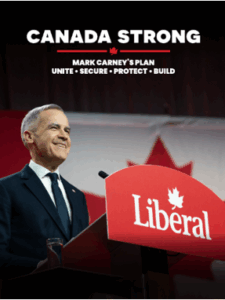We have a Liberal government and three of our five local MPs are Liberals—Lisa Hepfner returns on Hamilton Mountain, John-Paul Danko in Hamilton West-Ancaster-Dundas, and Aslam Rana in Hamilton Centre, plus Karina Gould returning in Burlington.
 The Liberals committed to a number of housing proposals:
The Liberals committed to a number of housing proposals:
- Build Canada Homes, a new federal agency that will develop housing on federal lands and fund affordable housing, at $2.9 billion a year
- Cutting municipal development charges in half on multi-unit buildings and, with the provinces, making up for the lost municipal revenue , at $1.5 billion a year
- Cutting the GST for first-time home buyers on all new or substantially-renovated homes priced at less than $1 million ($1.5 million in some high-price cities), estimated to cost $383 million a year, rising to $413 million
- Reintroducing the Multi Unit Rental Building tax incentive on rental construction, at $132 million the first year, then $804 million, $1.36 billion and $1.83 billion
- Facilitating conversion of existing buildings into affordable housing at $25 million rising to $40 million.
Reaction: The most disappointing aspect of the Liberal housing plan are what it doesn’t say. When he ran for leader, Mark Carney committed to doubling the number of non-profit housing units in a decade, which is the minimum we need to seriously tackle housing affordability. But that’s not in the election platform. And the amounts of money included in the platform and shown above, even if it all went to non-profit housing (and it won’t) is not nearly enough. Something like $20 billion a year would be closer.
That kind of investment, beyond meeting a desperate need, would provide real benefits as the economy slows and layoffs rise because of the tariffs and uncertainty created by Donald Trump.
Build Canada Homes should build or support nothing but non-profit rental housing. If it did, the projected $2.9 billion would be an improvement over the Trudeau Liberals although still fall far short of what’s needed to double the supply of non-profit and co-op housing.
Cutting development charges can certainly make it less expensive to build. It’s appropriate that it’s focused on multi-unit buildings, but it should be directed to rental buildings and with conditions—that the units be affordable to those with incomes below the median.
The GST cut, on a million dollar house, would mean a saving of $50,000. The GST in housing is paid by the contractor, not the homebuyer, so the saving might not be passed on to the buyer. And even if it is, it’s not clear if it’s enough to allow someone to buy a home they otherwise couldn’t afford or if it will encourage more new construction.
The money provided for facilitating conversions is quite small, especially if it is intended to cover the cost of buying a building to convert it. The Caroline Street Co-op, for instance, paid $4.8 million to buy its building.
The Liberals also promised significant funding to boost prefabricated construction, expand the existing Housing Accelerator Fund, speed up approvals, and funding for training and apprenticing skilled trades workers but none of them were included in the costing of Liberal promises that the party provided.
In the face of lots of other pressures to deal with the Trump threats, including defence, security intelligence, and ensuring Canadian firms develop our resources, it’s important that we continue to be committed to fairness for all Canadians, including housing. On housing, that will require focusing most investments in housing on non-market housing. The government spends much more each year on tax breaks that go mainly to well-off homeowners than it has ever spent on housing for those struggling to pay unaffordable rent.